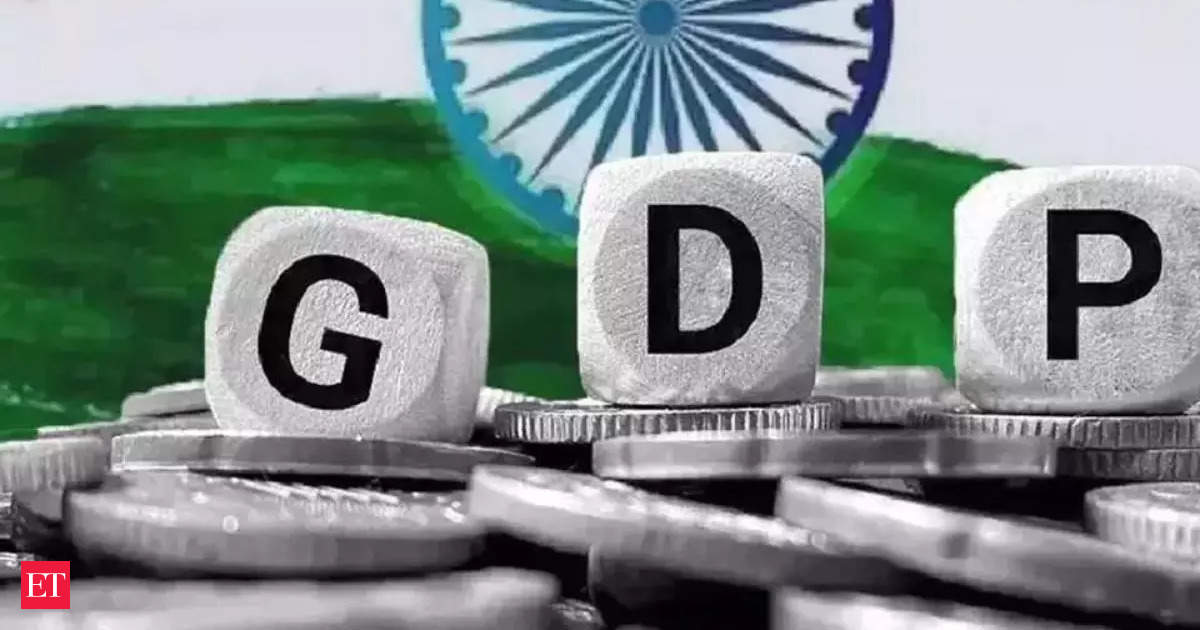Official data on Friday will likely show that growth moderated in the latest quarter from a pace of around 8% previously, largely due to a slowdown in government spending ahead of the election. Recent indicators show that consumer confidence is waning and that rural spending has yet to recover to pre-Covid levels. A looming slowdown in the global economy is another major risk to the outlook.
Goldman Sachs Group Inc. has already cut India’s growth forecast for the current calendar year by 20 basis points to 6.7%, while Bloomberg Economics lowered its projection for the fiscal year through March 2025 to 6.8% from 7.2%.
This is putting pressure on the Reserve Bank of India to start cutting interest rates after keeping them unchanged for more than 18 months. The central bank has been reluctant to pull the trigger due to inflation risks, which are dominated by high food prices.
According to a Bloomberg survey of economists, gross domestic product likely grew 6.8% last quarter from a year earlier. That was the slowest pace in five quarters and less than the central bank’s projection of 7.1% for the period. The economy grew 7.8% in the January-March quarter. The government is scheduled to release the data at 5:30 p.m. local time on Friday. Here are some of the key issues that could affect the numbers:
Consumer spending remains subdued
Businesses continue to curb investment, while consumer confidence fell for a second consecutive month in July, dampening the outlook for private consumption, which accounts for nearly 60% of India’s GDP. GDPSpending in rural areas, where about 65% of India’s population lives, remains subdued, and a Citigroup Inc. index that tracks rural consumption shows spending has yet to reach pre-Covid levels.
Corporate profits are taking a hit, which means lower investment and slower growth in the future.
There is a “risk that corporate sector profitability remains weak even in subsequent quarters, due to higher input costs and a reduction in demand,” Kaushik Das, an economist at Deutsche Bank AG, wrote in a note. If that happens, growth could be lower than the central bank’s forecast of more than 7% expansion in each quarter of the current fiscal year, he wrote.
Government investment slows ahead of elections
India’s government slowed investment and construction in the run-up to the election, which lasted more than six weeks until June 1. The vote returned Prime Minister Narendra Modi to power on a promise to boost the economy, though his party lost its absolute majority in the lower house of parliament.
The government spent 16.3% of its budgeted capital expenditure in the first quarter of the fiscal year, compared with 27.8% in the same period last year.
What Bloomberg Economics says
Looking ahead, we see the economy rebounding in the third quarter of 2024 thanks to increased government spending now that the national elections are over. Another plus point is that lower bond yields are reducing borrowing costs for larger companies.
But the RBI’s hawkish stance risks triggering a deeper slump that may be harder to reverse, particularly in an industrial sector facing low pricing power and restrictive real rates.
— Abhishek Gupta, Indian economist
GDP distortions arising from tax brackets should decrease
India’s growth, up 8.4% and 7.8% in the previous two quarters, was partially distorted by the net indirect tax category used to calculate GDP. An alternative measure of growth — gross value added, or GVA, which strips out that distortion — showed a more moderate expansion, close to 6%.
Economists say the divergence between GDP and GVA will not be as apparent in Friday’s data.
Teresa John, an economist at Nirmal Bang Institutional Equities, estimates the gap will be 20 to 25 basis points this year, compared with 93 basis points last year. A Bloomberg survey of economists forecast that GVA grew 6.4% in the April-June period from a year earlier.
Agriculture benefits from better rainfall
Surplus monsoon rains, which irrigate half of the country’s farmland, are likely to provide some relief to the agricultural sector and help rural India. A recovery in rural areas will boost incomes while also reducing food inflation in the coming months, said Sameer Narang, an economist at ICICI Bank Ltd. saying.
Disclaimer:
The information contained in this post is for general information purposes only. We make no representations or warranties of any kind, express or implied, about the completeness, accuracy, reliability, suitability or availability with respect to the website or the information, products, services, or related graphics contained on the post for any purpose.
We respect the intellectual property rights of content creators. If you are the owner of any material featured on our website and have concerns about its use, please contact us. We are committed to addressing any copyright issues promptly and will remove any material within 2 days of receiving a request from the rightful owner.

